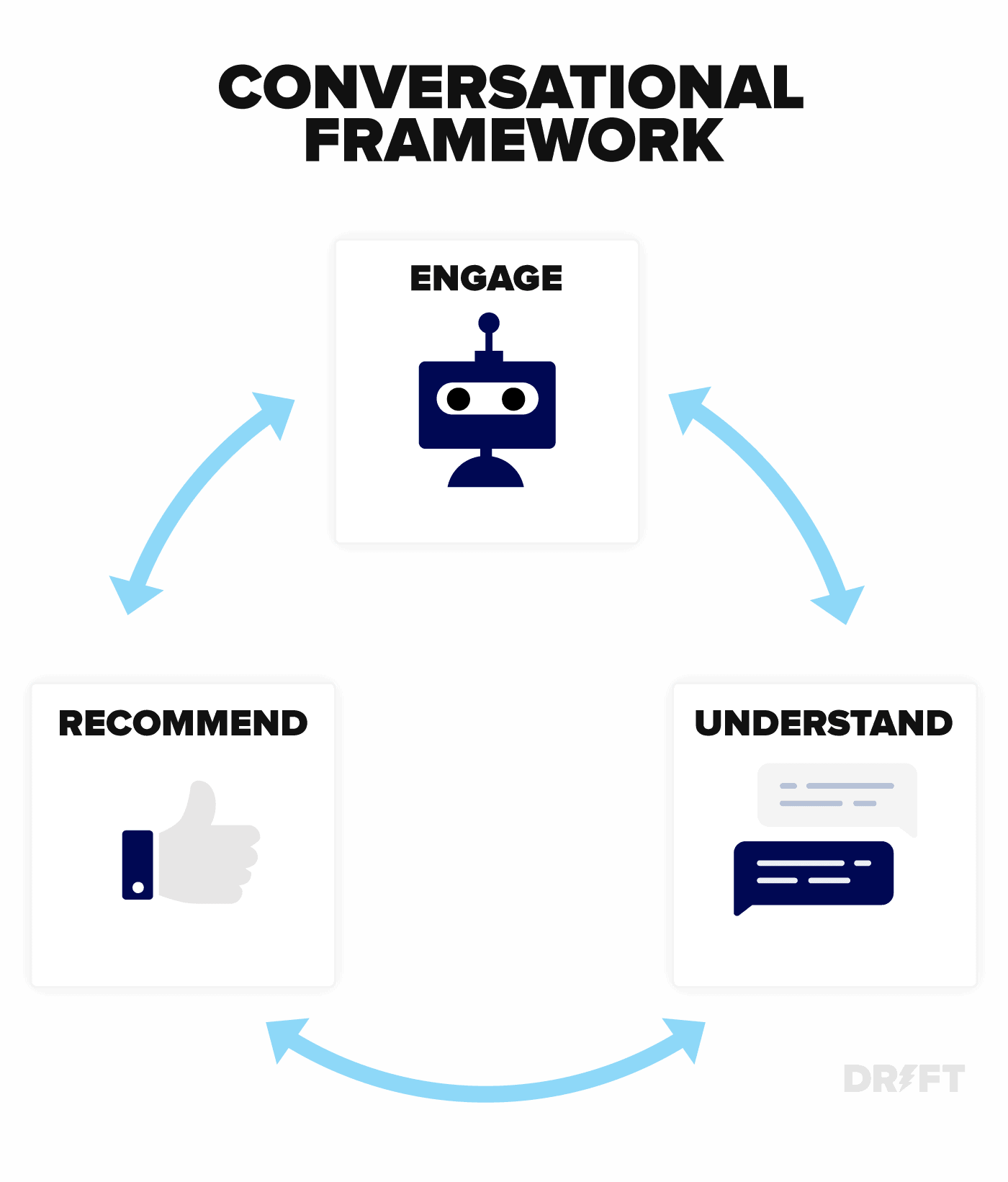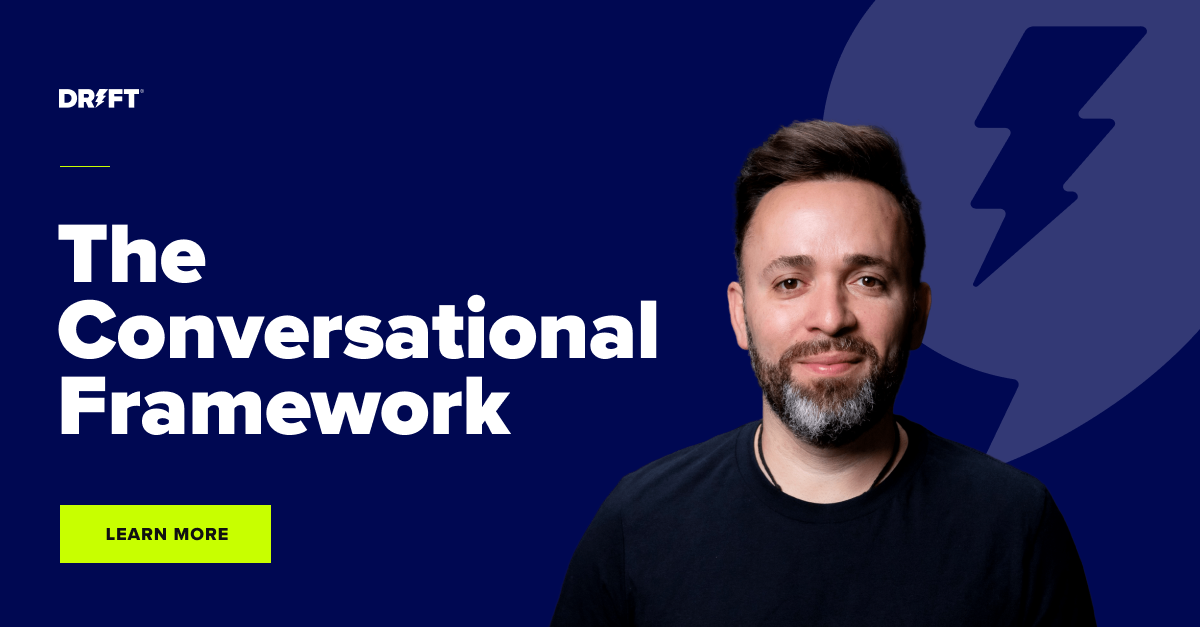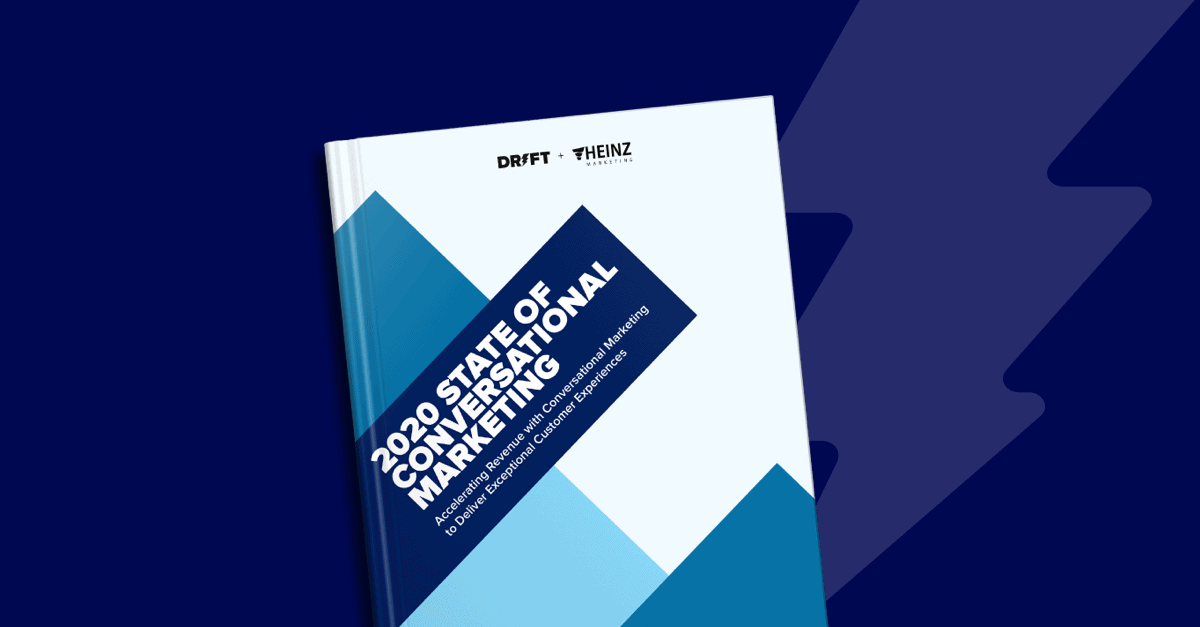Many people hear Conversational Marketing and think, “Great, I’ll throw a few chatbots on my site and call it a day.” But it’s so much more than that.
Conversational Marketing and Conversational Sales have transformed how businesses buy from other businesses. Why? Because buyer behaviors and expectations are constantly changing and it’s up to us, as marketers and salespeople, to keep up.
But where do we even begin?
Let’s go all the way back to 1876 — the year Alexander Graham Bell opened an entirely new means of communication with the invention of the telephone. This real-time channel provided a more convenient, faster way to converse. It made buying experiences more pleasant because they now involved a very personal part of our identities — our voices.
But by the mid-20th century, things had changed. And TV, radio, magazines, and catalogs began influencing what and how we buy. Buyers now had more freedom to make informed decisions on their own, spending less time (or no time at all) talking to salespeople face-to-face. And when they did engage with a salesperson, they had a better understanding of exactly what they wanted to buy. This was known as the Brand Era.
In the 90s and into the 2000s, the internet changed everything again. Magazines and catalogs went online. Forms, email, and inside sales replaced traditional field marketing. Marketing automation systems were born. Success was measured by leads in this period called the Demand Gen Era.
Today, we’re in the age of automation and AI, known as the Revenue Era. Marketers and salespeople have more ways to capture our attention than ever before. But at the same time, the natural, human way of communicating — with personal, 1:1 conversations — has been disrupted. We’ve alienated buyers. Sellers don’t get the leads they want. Marketers do silly things to win more attention. Customer acquisition costs go up, conversion rates go down, and customer happiness and trust plummets.
We don’t achieve our desired results and buyers don’t get the experience they’re after. We need a better way to remove the layers, friction, and gates — and get back to real-time communication basics.
Drift’s Conversational Framework puts customer experience and relationships at the center of marketing and sales. A simple three-part framework — Engage, Understand, and Recommend — guides businesses towards creating trust and delivering value through the power of conversations.

Engage
Conversations today take place in person, over Facebook Messenger, Zoom, Slack, and myriad other channels. Regardless of the platform, these systems give us the freedom to engage with one another however we want.
Similarly, today’s buyers want to engage with a business when and how they choose. They expect to receive a simple, helpful, and seamless buying experience; and they certainly don’t want to be blocked when trying to get answers. If you don’t make it easy and convenient to buy, you’re going to miss out on sales.
So your marketing and sales teams need to be ready to engage buyers anytime they’re ready to start a conversation. The secret to engaging is to capture the intent of buyers when it’s at its highest. So as soon as they’ve set time aside in their day to look at your website, you need to engage with them right then and there. You’ll start to cement a relationship that can be leveraged towards a faster sale and a better buying experience.
You have very little control over how a buyer buys your product. But what you can do is provide a way for buyers to start real-time conversations with you by connecting your existing marketing campaigns to chatbots on your website to ensure a targeted and personalized welcome for every buyer.
 The takeaway 💡 Your main goal should be to build trust with buyers. Make engaging with your business as simple as possible for them. You can continue to use forms, but remember, if the buyer feels like their experience is less than ideal, you run the risk of losing their attention, or even a potential sale.
The takeaway 💡 Your main goal should be to build trust with buyers. Make engaging with your business as simple as possible for them. You can continue to use forms, but remember, if the buyer feels like their experience is less than ideal, you run the risk of losing their attention, or even a potential sale.
Understand
Your buyers have more information at their fingertips than ever before. In fact, they seek out information and facts before they engage in a conversation with you. But, they still want you to help them understand exactly how you can solve their needs.

That’s why every business today is doing some sort of content marketing. The education and knowledge you share with buyers is important. Marketing should strive to be a trusted source of information by creating content that answers buyers’ questions and inspires them to act. Make your website and content as conversational as possible — keep it simple and pleasant to find an answer, or to connect with someone. Sales should work to become a buyer’s trusted advisor by listening and demonstrating empathy. Use messaging and video to create conversational experiences with buyers — make them personal, and focus on getting buyers what they want, when they want it.
In addition to creating better buyer experiences, Conversational Marketing and Sales help your teams better understand each other. Your streamlined buying experiences make keeping track of lead website interactions easy. You can trace the trajectories of those leads — from their first conversations to when they convert into customers. That way, both your marketers and salespeople can see how conversations are accelerating revenue.
The takeaway 💡 Be empathetic when offering help, ask the right questions, and engage and treat each buyer you’re talking to like a human rather than an email address that you’re trying to qualify.
Recommend
Now this is where the rubber meets the road. Recommendations and reviews are an essential part of how buyers buy. They turn to their network of friends, family, and other customers to gather insight and opinions. Recommendations are memorable. And buyers will definitely remember whether the recommendations you shared with them were useful or just more marketing jargon.
It’s crucial that you deliver timely and honest guidance to solidify a trusting relationship with buyers. After all, you want them to purchase your product and go forward to recommend it to others. But it’s not just about what you sell anymore. Buyers also want to know if your business is one they would want to partner with. Their overall experience and small interactions with your brand matter too.

Your goal should be to provide as many useful recommendations as possible. But don’t oversell. Each of your recommendations should be helpful and personal to the individual buyer. Be patient and really listen to your buyers. That’s the only way to understand if the recommendations you’re offering are truly helpful. Finally, use a combination of verbal and non-verbal cues to gauge if a recommendation is landing.
The takeaway💡 Buyers won’t tolerate mistakes or bad recommendations. The more helpful the recommendation, the more trust will be developed and the higher the chance the relationship you’ve built will last.
—
Your goal today is to engage with buyers on their terms, to understand who they are and what they want, and to recommend valuable ideas and solutions at a moment’s notice.
The time has never been better to change the way you help people buy. By creating a better buying experience that guides buyers through your funnel with less friction. Use the Conversational Framework as your guide to build relationships with your buyer and accelerate revenue for your business.
Editor’s Note: This article was originally published in February 2019 and has been updated to reflect new information.









